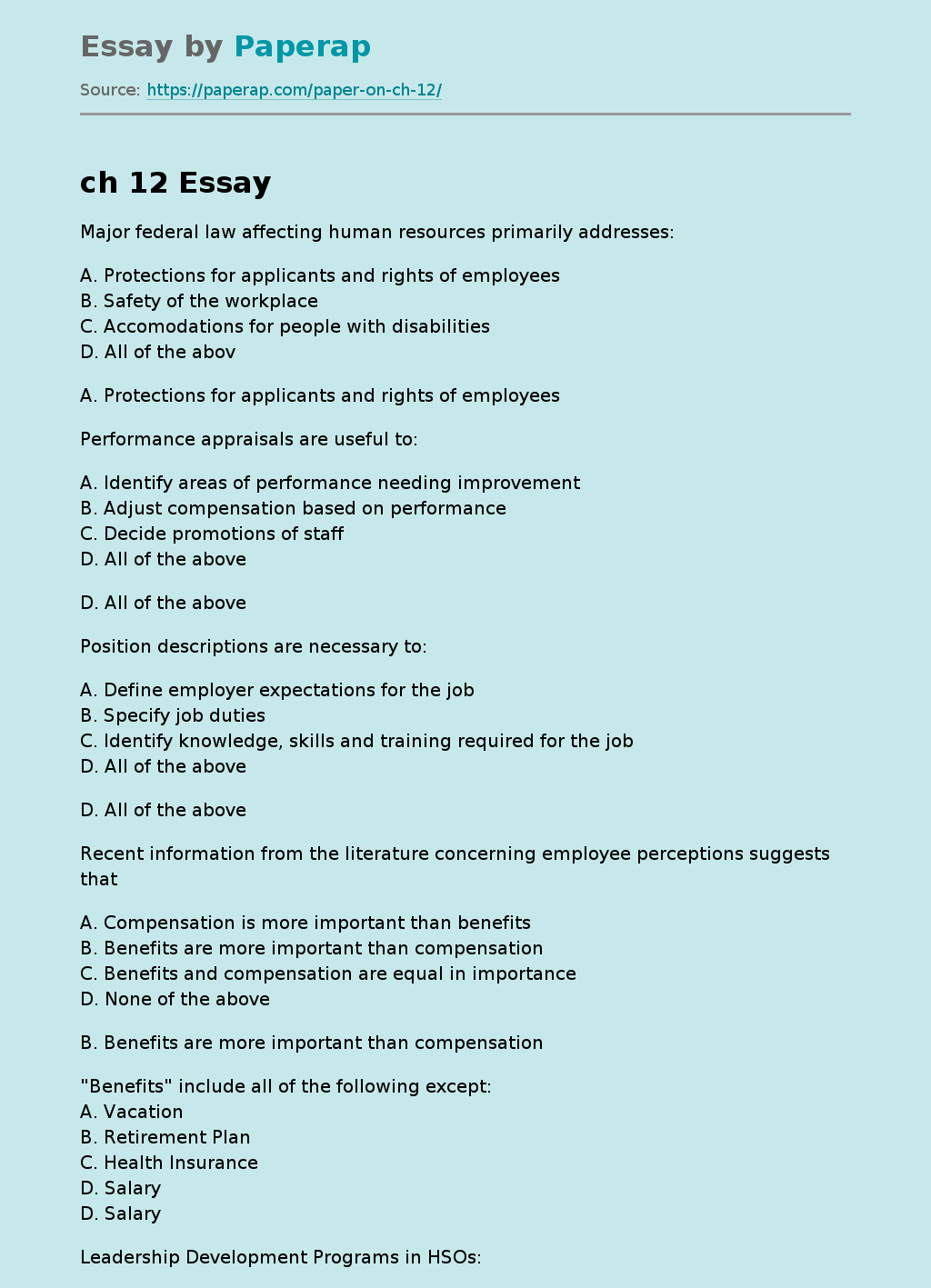Federal Law for Human Resources
A. Protections for applicants and rights of employees
B. Safety of the workplace
C. Accomodations for people with disabilities
D. All of the abov
A. Identify areas of performance needing improvement
B. Adjust compensation based on performance
C. Decide promotions of staff
D. All of the above
A. Define employer expectations for the job
B. Specify job duties
C. Identify knowledge, skills and training required for the job
D. All of the above
A. Compensation is more important than benefits
B. Benefits are more important than compensation
C. Benefits and compensation are equal in importance
D. None of the above
A. Vacation
B. Retirement Plan
C. Health Insurance
D. Salary
A. Are found in less than 10% of HSOs
B. Serve as a recruitment tool for HSOs
C. Focus primarily on filling middle-level manager positions
D. All of the abov
A. They can choose benefits in line with their needs
B. Coverage is limited to high quality providers
C. Employer covers total cost
D. All of the above
A. Dissatisfied staff
B. Staff turnover
C. Longer work hours for staff
D. All of the above
A. Usually do not reward top suggestions
B. Are viewed by employees as positive because of the opportunity to have input
C. Are the same as Employee Assistance Programs
D. None of the above
A. Define jobs
B. Determine projected staffing needs
C. Evaluate employee performance
D. All of the above
A. Foster positive communication with employees
B. Encourage feedback from employees
C. Show interest in and meet the needs of employees
D. All of the above
A. Equal Opportunity
B. Unions and collective bargaining
C. Employee retirement plans
D. Recruitment
A. Incentive compensation for employees
B. Employee problems
C. Retirement plans
D. All of the above
A. Interviews of candidates
B. Ranking of candidates
C. Hiring of a candidate
D. All of the above
A. Quality of Care
B. Profitability
C. Staff Satisfaction
D. Patient Satisfaction
A. Staff salaries and benefits are costly and affect the HSO’s competitiveness
B. Organizational performance is based on individuals
C. Staff should report to only one manager
D. Staff should be used in multiple roles to create flexibility
A. Increasing competition among HSOs
B. The need to analyze jobs
C. Trends in using incentive compensation
D. All of the above
A. Includes the perceptions of others in addition to an employee’s manager
B. Occurs at several points during the yearly assessment period
C. Uses evaluation criteria that are different from those in the traditional performance appraisal
D. All of the above
A. No effect
B. Increase motivation
C. Decrease performance
D. Increase retention
A. Advertising for employees
B. Job Analysis
C. Establishing position descriptions
D. Managing compensation and benefits
Federal Law for Human Resources. (2018, Jan 22). Retrieved from https://paperap.com/paper-on-ch-12/
